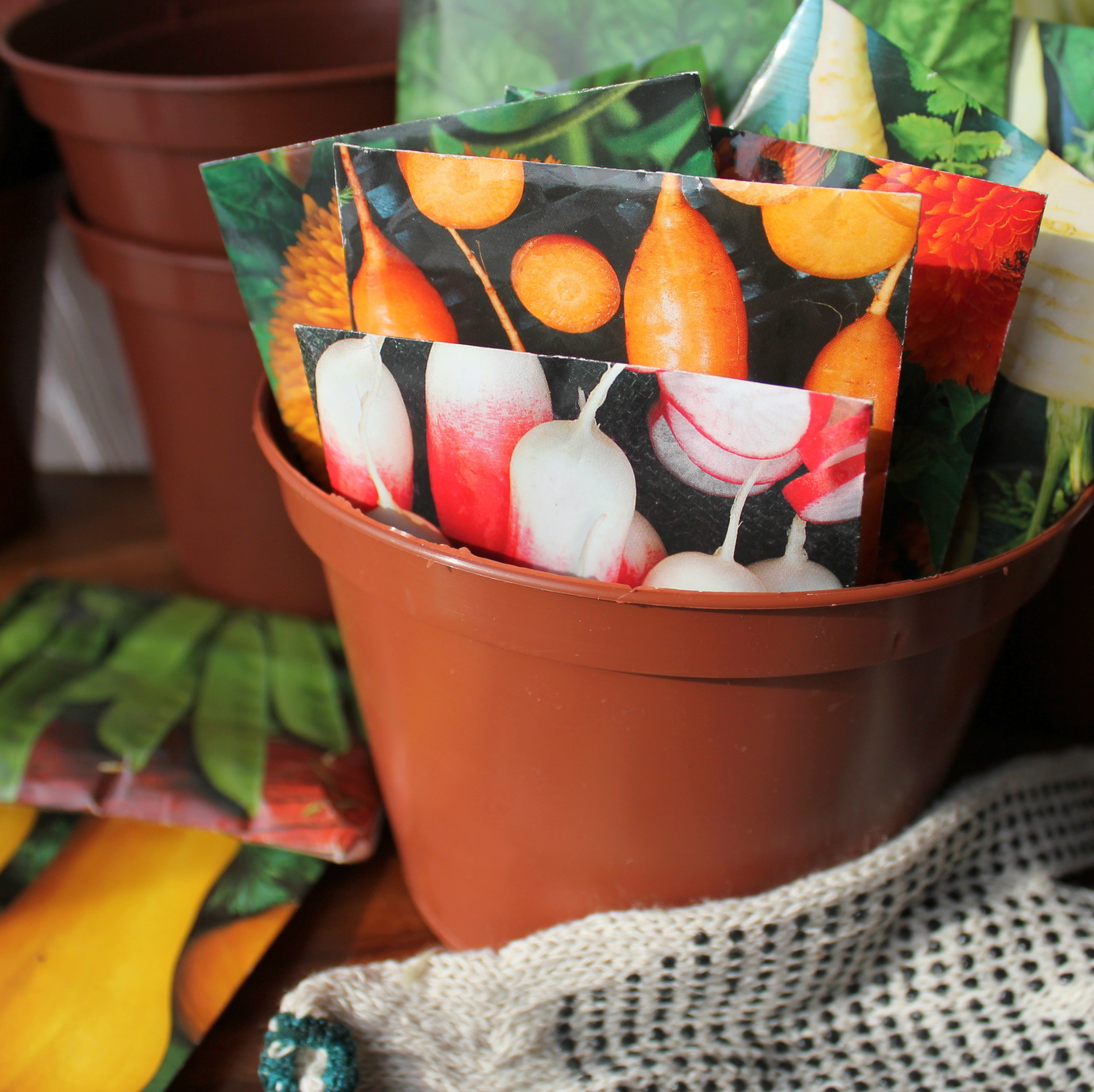Winter is usually the time that us gardeners tend to sit by the window, dreaming of the elaborate gardens that we’ll have in the summer. While you’re craving a glimpse of green, your favorite activity might be thumbing through seed catalogs, plotting the different species that you’re going to try out this year.
If you’re ordering specialty seeds, it could take a while to get them. And if you’re planning to start seeds indoors before transplanting them outside, you want to plan pretty early ahead of time. For example, a tomato plant often takes up to two months to grow from seed to transplantable size. And after planting, they’ll take 2-3 months to produce fruit.
For all you beginners, here’s a simple guide to planning and ordering seeds for your garden:
- You can order from a catalog, from a seed company online, or you can simply wait until spring, when every home improvement store and grocery store will have racks of basic garden seeds. However, a catalog (online or in print) will often give you more variety to choose from.
- If your garden is strictly organic or heirloom, make sure to order from companies that specialize in the same category. Research the company to make sure that it’s established and that they support sustainable growing procedures. Look for companies that have signed the Safe Seed Pledge, which means that they won’t sell genetically modified seeds.
- You might also want to order from a smaller local company, rather than a big national conglomerate. Seeds that have thrived and grown in your region specifically have a much higher success rate.
- Re-order your favorites. The excitement of a new garden season often lies in trying out something new, but remember to re-order your tried-and-true favorites. If it grew well in your garden last year, and produced fruits and vegetables that your family loved, add it to your list of regulars so that you have a few harvests each year that you can really depend on.
- Do your research on each seed, so that you can incorporate placement, growing time, and special care instructions into your overall garden plan.
- Remember that not every garden is picture perfect. In seed catalogs, the most perfect examples are shown, with amped-up colors, and focus that makes each plant a showstopper. That’s not usually how the plant will look in your garden, however carefully you plant and cultivate. Make sure that you have realistic expectations.

